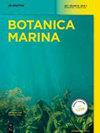The use of macroalgal hydrolysate as a carbon source in the lipid production of the marine heterotrophic dinoflagellate Crypthecodinium AL–05
IF 1.4
4区 生物学
Q2 MARINE & FRESHWATER BIOLOGY
引用次数: 0
Abstract
Abstract Crypthecodinium cohnii strains can accumulate significant amounts of lipids with a high fraction of docosahexaenoic acid that is used in pharmaceutical and nutraceutical applications. In this study, macroalgal hydrolysate was used as a low-cost carbon source for the growth of the oleaginous strain Crypthecodinium sp. AL–05 to reduce the cost of its growth and lipid production. The Saudi strain was placed in the genus Crypthecodinium with high statistical support based on the sequences of three concatenated genes (SSU, ITS, and LSU rDNA). Crypthecodinium sp. AL-05 was grown on four different glucose concentrations and three different macroalgal hydrolysate concentrations: 20, 40, and 80 g l −1 . We also used the same concentrations of macroalgal hydrolysate with 10 g l −1 of four carbon sources: acetic acid, glycerol, glucose, and sugarcane molasses. Glucose (40 g l −1 ) gave the best results, followed by 80 g l −1 macroalgae alone and with glucose or molasses. One-way ANOVA followed by a Bonferroni correction post-hoc test showed that the dry weight of Crypthecodinium sp. AL–05 produced using the following carbon sources: the four concentrations of the pure glucose, 80 g l −1 macroalgae alone, 40 and 80 g l −1 macroalgae + glucose, 40 and 80 g l 1 macroalgae + molasses were significantly higher than the other 10 carbon sources tested. Three carbon sources (20 g l −1 macroalgae with glucose, molasses and acetic acid) produced percentages of lipids that were significantly lower than the other 16 carbon sources. For the first time, our research shows that the dinoflagellate Crypthecodinium AL–05 can be successfully grown on macroalgal hydrolysate, which can be used in industrial processes. Importantly, Crypthecodinium sp. AL–05 grown on 80 g l −1 macroalgae produced only saturated fatty acids, of which caprylic acid represented 43.45 % of the total fatty acids. Caprylic acid is widely used in industry and pharmaceuticals and the Saudi isolate can be used for its commercial production using macroalgae as a carbon source.大藻水解液作为碳源在海洋异养鞭毛藻隐鞭毛AL-05脂质生产中的应用
摘要隐cocodinium cohnii菌株可以积累大量的脂质,其中含有高含量的二十二碳六烯酸,用于制药和营养保健应用。本研究采用大藻水解液作为低成本碳源,用于产油菌株隐藻(Crypthecodinium sp. AL-05)的生长,以降低其生长成本和产脂成本。根据三个串联基因(SSU, ITS和LSU rDNA)的序列,沙特菌株被放置在隐球菌属,具有很高的统计支持度。隐藻AL-05生长在四种不同的葡萄糖浓度和三种不同的大藻水解物浓度:20、40和80 gl−1。我们还使用了相同浓度的大藻水解液和10 gl−1的四种碳源:乙酸、甘油、葡萄糖和甘蔗糖蜜。葡萄糖(40 gl−1)的效果最好,其次是单独使用80 gl−1的大型藻类,再加上葡萄糖或糖蜜。单因素方差分析和Bonferroni校正事后检验表明,使用纯葡萄糖、80 gl−1巨藻单独、40和80 gl−1巨藻+葡萄糖、40和80 gl−1巨藻+糖蜜4种碳源生产的隐藻AL-05的干重显著高于其他10种碳源。3种碳源(含葡萄糖、糖蜜和乙酸的20 gl−1巨藻)产生的脂质百分比显著低于其他16种碳源。我们的研究首次表明,隐鞭毛菌AL-05可以在大藻水解物上成功生长,并可用于工业生产。值得注意的是,在80 g l−1的大型海藻上生长的Crypthecodinium sp. AL-05只产生饱和脂肪酸,其中辛酸占总脂肪酸的43.45%。辛酸广泛用于工业和制药,沙特分离物可用于商业生产,使用大型藻类作为碳源。
本文章由计算机程序翻译,如有差异,请以英文原文为准。
求助全文
约1分钟内获得全文
求助全文
来源期刊

Botanica Marina
生物-海洋与淡水生物学
CiteScore
4.10
自引率
4.50%
发文量
43
期刊介绍:
Botanica Marina publishes high-quality contributions from all of the disciplines of marine botany at all levels of biological organisation from subcellular to ecosystem: chemistry and applications, genomics, physiology and ecology, phylogeny and biogeography. Research involving global or interdisciplinary interest is especially welcome. Applied science papers are appreciated, particularly when they illustrate the application of emerging conceptual issues or promote developing technologies. The journal invites state-of-the art reviews dealing with recent developments in marine botany.
 求助内容:
求助内容: 应助结果提醒方式:
应助结果提醒方式:


